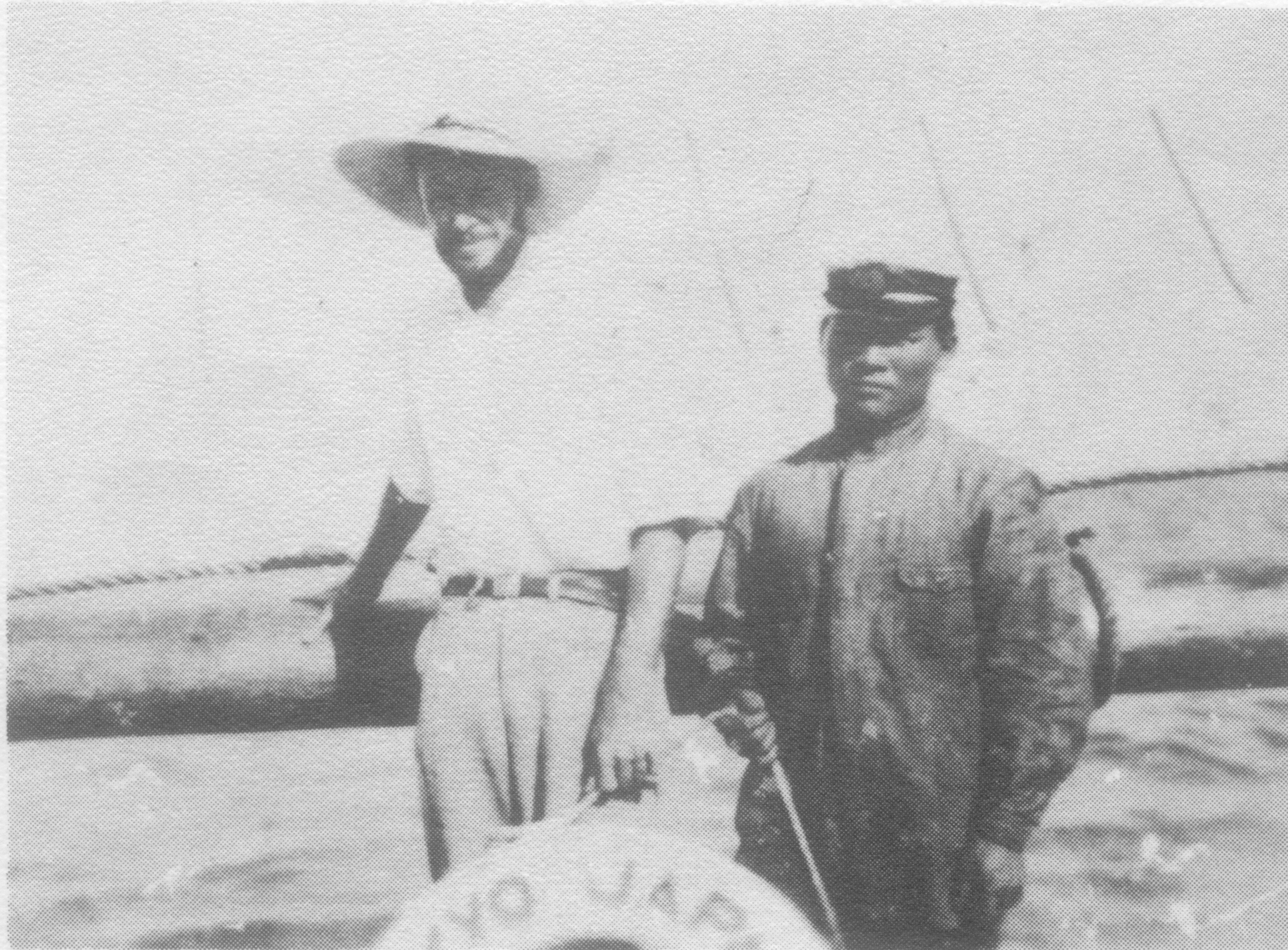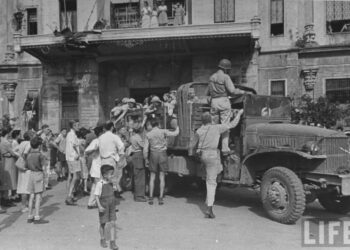The Japanese governor of the Northern Marianas had been widowed so he took a special trip to Japan to find himself a new wife. He found a young woman he was smitten with in the American protestant church’s orphanage. Soon, a wedding was officiated and he planned to head back to Saipan with his new wife.
Ahead of his arrival, he had sent a dispatch to the island that he would be returning with his Christian wife. This he did to discourage efforts of having a Buddhist ceremony on their return considering the new missus was Christian.
And news spread like wildfire on the predominantly catholic island. When the newlyweds arrived, they were lavished with gifts by the residents who assumed she was Catholic, and by their gesture, would earn the governor’s approval and better treatment. But to their dismay, they found out that she wasn’t Catholic but a protestant.
So, Hans Hornbostel, who wrote this story in a Philippine magazine years later about how the Japanese governor brought home a wife, was at the dining table with the newlyweds. He overheard the governor was asking what was the difference between a catholic and a protestant. After several back and forth with those around him, he came to the conclusion that the difference was slight.
Hornbostel had heard the Japanese governor say to his wife:
My dear never have the natives brought me such excellent food, and never have they been so kindly disposed towards me. Now it seems that the people are under the impression that you are a catholic and as I have learned by your own answers to my questions that after all there is very little difference between catholic and the protestant faiths, I think that it would be good policy for you to call on the good Padre tomorrow morning and become a catholic.
“Rota Days,” Philippine Magazine, 1936.
Hornbostel, who initially thought that he could be joking, looked at the wife’s face and realized that he meant it.
The following morning, Hornbostel set out early to conduct work in the Talofofo area of the island and upon his return to town he ran into the catholic priest who was seemingly pleased.
Ah, Mr. Hornbostel, you must come with me to the tavern and celebrate over a bottle of beer a great victory.”
Philippine Magazine, p. 34. 1936.
So Hornbostel thought that the Jesuit priest was celebrating the conversion of some Carolinians. But the priest had a revelation:
A great victory has been won for the governor’s lady will shortly become one of our faith.
So he thought the governor, for the sake of the islanders’ gifts, induced his wife to be converted into Catholicism.
Who was Hornbostel?
U.S. Marine Major Hans Hornbostel had been living in the Philippines since 1929 when WWII broke out. He, his wife Gertrude, children Earl, Gertrude Hornbostel Stewart and her family, and Johanna Marie, became prisoners of war in three camps.
Following the liberation of the Philippines, Gertrude, who was interned at Santo Tomas in Manila, contracted Hansen’s disease. She only found out upon their release from the internment camp and when they were examined in San Francisco. She was advised to seek further treatment in Carville in Louisiana.
Hans Hornbostel, having survived Death March, and the war, and having been separated from his family for several years, had wanted to join his wife in Carville. During that time, those who had the disease were shunned. Hornbostel made headlines in the United States when he insisted to be with his wife, a request accommodated by authorities. For three years while in Carville, and long after Gertrude had been released, they both actively went on an information campaign, doing several interviews with the media to combat the stigma of the disease. They both retired in Long Island, New York where he died in 1957.
His was a fascinating life and his work just as equally fascinating due to the wealth of his contributions to the body of knowledge about the Marianas’ “latte period”. From 1922-1926, he worked for Hawaii’s Bernice Pauahi Bishop Museum gathering specimens. From 1924 to 1926, he made several visits to Saipan, Tinian, and Rota in the north and succeeded in saving for posterity a rich cultural and historical assemblage that would have otherwise been destroyed in WWII.
During the 30 years of Japanese administration, the islands became exporters of sugar, with workers from Okinawa, Korea, and elsewhere outnumbering the indigenous residents. Mid 1930s, the Japanese empire began gradually converting farmlands into airfields and bases, until WWII changed them, specially, Saipan, into a military garrison. An American invasion in June 1944 converted the islands into the busiest airbases in the world where the counter-attacks were launched against the Japanese empire culminated with the dropping of the atomic bombs that hastened war’s end.
Back to Hornbostel, a glimpse into the richness of his experience could be gleaned from his series of articles titled, “Rota Days”. Rota is the third main island of the Commonwealth of the Northern Mariana Islands and is closest to Guam. Owing to its insularity, Rota has preserved the Chamorro culture, according to one German scholar. Meanwhile, the seat of government has always been on Saipan. Tinian, on the one hand, is both an agricultural community and a tourist haven, and used to be the world’s largest operational airbase, where B-29 bombers “Enola Gay” and “Bockscar” flew from Tinian’s North Field to drop the atomic bombs in Japan in 1945.








